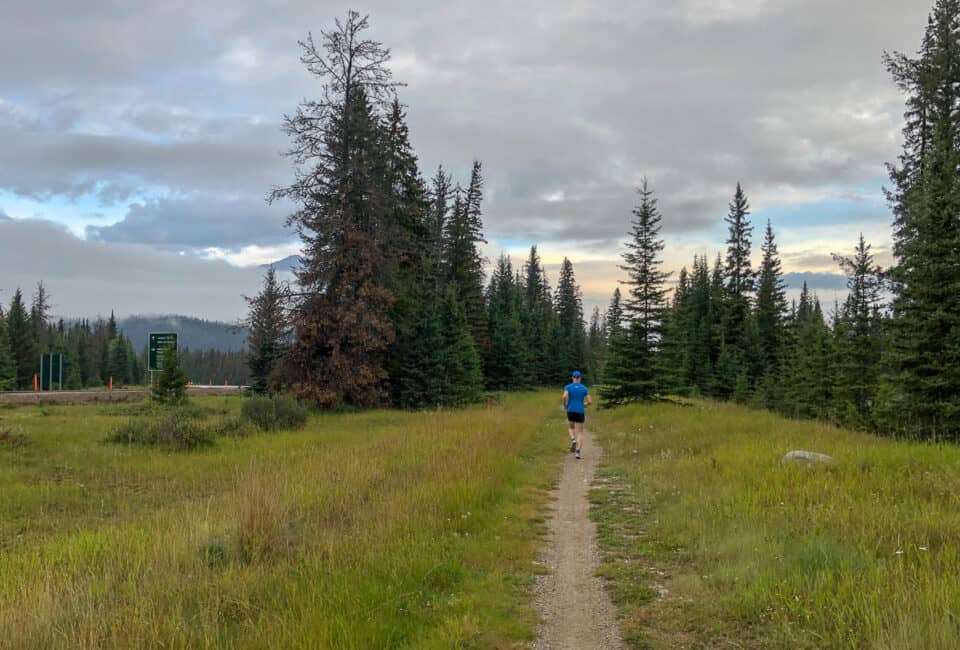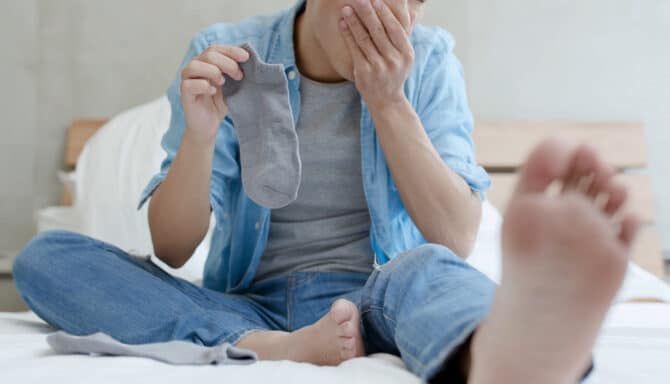Trail running? More like extreme running.
Trail runners run for hours on end pushing their body to the limit. They endure brutal terrain, harsh conditions, and they put their feet through the wringer.
When running at such extremes, it’s no wonder that injuries are common.
Below are six of the most common trail running injuries, and what you can do to prevent and treat each of the pains. These injuries are not exclusively for trail runners, but are common because of the nature of the sport leaving the average runner more susceptible to these ailments.
Metatarsalgia
Metatarsal pain is discomfort in the small bones within the ball of your foot. Metatarsalgia can start off as a small bruise, and slight discomfort, but can quickly escalate into a serious injury like a metatarsal fracture.v
Fortunately, most trail running shoes these days are built with a rock plate, a rigid piece of plastic within the midsole. The rock plate offers protection against sharp edges on the trail and is essential when running on more technical terrain when facing rocks, roots, and uneven surfaces.
Alternative forms of prevention and treatment include using a metatarsal pad, icing the affected area, and self-massage. When in doubt, and you’re not sure whether the injury is serious, take an extra day or two off of running as a precautionary measure and cross-train in the pool or on the bike instead.
Achilles tendonitis
Trail running consists of a lot of ups and downs.
The undulating terrain is a lot different than say, road running. Constantly climbing and descending can add pressure on parts of your body like your Achilles tendon. When climbing or descending, stress is disproportionally allocated to your lower legs compared to running on flat land.
Achilles tendinitis can be a sharp or dull pain in your Achilles heel and can extend into your lower calf. Because the Achilles is such an essential part of your running economy, addressing the symptoms early is important to prevent the tendinitis to be long-lasting.
When trail running, make sure to ease your way into it, and do not increase mileage too quickly. Doing a proper warm-up with calf raises and some stabilizing exercises can help prevent tendinitis and eliminates the period at the beginning of a run when you’re running on stiff legs. Cold muscles don’t fire properly, and they can lead to overcompensation, with that domino effect reaching your Achilles heel.
Ankle Sprains
An ankle sprain is one of the most common trail running injuries. Because of the rugged terrain and unexpected obstacles that many trails present, all it takes is one wrong step to roll an ankle. When you sprain an ankle, you essentially over-stretch the ligaments or tear them in more serious cases, beyond their maximum. Immediate signs include swelling, often around the top, or lateral side, of your foot, pain, and tenderness.
To lessen the lasting impacts of an ankle sprain, follow the R.I.C.E. protocol which includes rest, ice, compression, and elevation. This reduces swelling, and the pain to subside. In some cases, and if the sprain isn’t serious, you can have your ankle wrapped for support and continue running, although you’ll be more susceptible to re-spraining it if you come back too quickly.
It’s always good to do a proper warmup before trail running, and you can help prevent ankle sprains by working on mobility. Other ways of avoiding ankle sprains include planning your route ahead of time to account for mud and trail conditions, taking routes within your ability, and allowing adequate space between you and other runners as to not block your eyesight.
If you still experience pain after extended rest, or the pain is extreme immediately, contact a healthcare professional to rule out more serious injuries like a tear or rupture.
Blisters
Thanks to being out on the trains for hours on end, blisters are another common trail running foot injury. And it’s not only the duration of activity but also the crazy fact that in some cases the run involves crossing through – not around – small bodies of water, like Ajax, Ont.’s Seaton Soaker trail race.
Blisters can start small, like a hotspot somewhere on your foot, and get progressively worse if you don’t address the chafing. Investing in proper running socks, and using some sort of anti-chafe cream like vaseline can help prevent blisters in the first place. If you feel one in the early stages, cover it with a band-aid or better yet, use medical paper tape.
In fact, as published in a recent study, it’s reported “that inexpensive paper tape, the kind available at most drugstores, when applied to blister-prone areas prior to exercise, successfully reduced the incidence of foot blisters in those areas. The tape commonly known as surgical tape is used for wound treatment. It is only mildly adhesive — an advantage because it doesn’t tear the blisters if they do occur.” Sometimes the simplest measure can be the most effective.
ITB Syndrome
Iliotibial band (IT) syndrome is one of the most frustrating and common trail running injuries.
ITB syndrome can be described as an overuse injury of the connective tissues that are located on the outer thigh and knee.
Thanks to the repeated climbs and descents of trail running, your IT band is exposed to more impact. Additionally, the IT band is stressed the most at certain flexion angles, like when ascending, while your knees and IT band take additional stress when descending.
A warm-up with clamshells and stretching out your hip flexors pre-run can help with the pain and tightness. What you want to do here is activate and work the hip abductors, as muscle imbalances and weakness can be the source of the problem.
You don’t necessarily need complete rest from running, but you will need pain management and mileage reduction, if necessary. Investing in a proper foam roller and routinely working the band will help alleviate pain. Plus, stretching our your hip flexors can help release your IT band.
Plantar Fasciitis
This pesky injury arises when you experience pain and inflammation within the tissue on the underside of your feet that connect your heel and toes. The pain can be anywhere from your heel to the ball of your feet and can be sharp or dull.
We recently wrote more about plantar fasciitis, remedies, and prevention methods on our blog, which you can read here.
Are you still experiencing any of these common trail running injuries? Book an appointment with us at Feet First Clinic online or by calling us at 416.769.3338(FEET).










